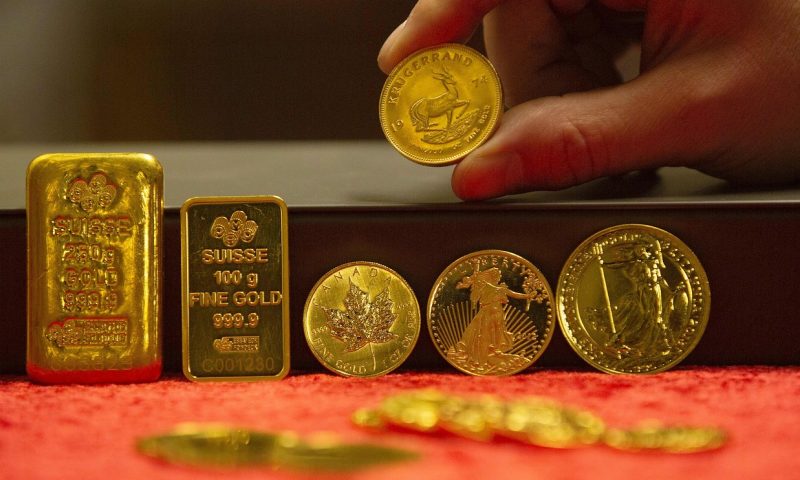Most-active August gold contract falls, but holds above $1,700 mark
Gold futures pared earlier losses Wednesday to finish off the session’s lows, as tensions between the U.S. and China worsened after U.S. Secretary of State Mike Pompeo announced that Hong Kong is no longer considered autonomous from China.
The announcement could pave the way for the Trump Administration to revoke special treatment for the Hong Kong economy, which is exempt from tariffs levied on Chinese imports. “Hong Kong is purely China’s internal affair,” China’s foreign ministry spokesman Zhao Lijian said in Beijing on Wednesday that China would take “necessary countermeasures” against any “interference” by “external forces.”
Under the United States-Hong Kong Policy Act of 1992, the U.S. treats Hong Kong, a semi-autonomous part of China, differently than the mainland in trade, commerce and other areas. An estimated $38 billion in trade between Hong Kong and the U.S. could be jeopardized, while nearly 300 U.S. companies have regional headquarters in the city.
Jeff Wright, executive vice president of GoldMining Inc., had expected to see a “snap back” in prices with U.S.-China tensions rising.
He also told MarketWatch that he’s “anticipating more bad economic data in coming days,” which will boost haven demand for gold.
August gold GCQ20, 0.38% GC00, 0.45%, which is now the most-active contract, fell by $1.40, or 0.08%, to settle at $1,726.80 an ounce, off the day’s low of $1,701.60.
July silver SIN20, 0.47% ended the near session high, up 16.2 cents, or 0.9%, at $17.757 an ounce.
Earlier gold prices fell as U.S. equities rose sharply on Tuesday and most were higher again in Wednesday dealings, finding support from optimism over the easing of lockdowns and by fiscal and monetary stimulus efforts by governments and central banks. That dulled some haven demand for gold.
The European Union’s new fiscal stimulus package “will likely be the beginning of another wave of stimulus that should help prop up risky assets,” said Edward Moya, senior market analyst at Oanda. The EU is on track to announce a €750 billion ($823 billion) stimulus package, according to news reports.
A loss of gold’s haven appeal could prove “fatal” for the yellow metal amid weak demand from other sources, said Carsten Fritsch, analyst at Commerzbank, noting data from the Swiss Federal Customs Administration on Tuesday that showed the country exported 131.8 [metric] tons of gold in April, the highest volume since last August.
However, a record 111.7 tons went to the U.S., likely to fulfill demand by exchange-traded funds, he said in a note, while exports to Asia collapsed almost completely.
“For the second consecutive month no gold at all was shipped to China; a mere 1 kilogram went to Hong Kong and 500 kilograms to India. This confirms what the Indian gold import figures and the bilateral gold trading data between China and Hong Kong had already indicated: gold demand has ground to a halt in China and India, traditionally the most important countries in terms of gold demand,” he said.
Still, “the new ‘Cold War’ between China and the U.S. will also likely drive a lot of demand for gold as tensions will remain in place leading all the way up to the presidential election,” Oanda’s Moya said in a market commentary. “Permanent damage to the economy will likely settle in over the next couple months and gold will see steady flows as unbalanced recovery takes form.”
Among other metals Wednesday, July copper HGN20, 0.46% settled at $2.38 a pound, down nearly 1.7%. July platinum PLN20, 0.09% rose about 0.6% to $878.10 an ounce, while September palladium PAU20, 0.66%, which is now the most-active contract, ended at $1,978.40 an ounce, down 0.4%.

